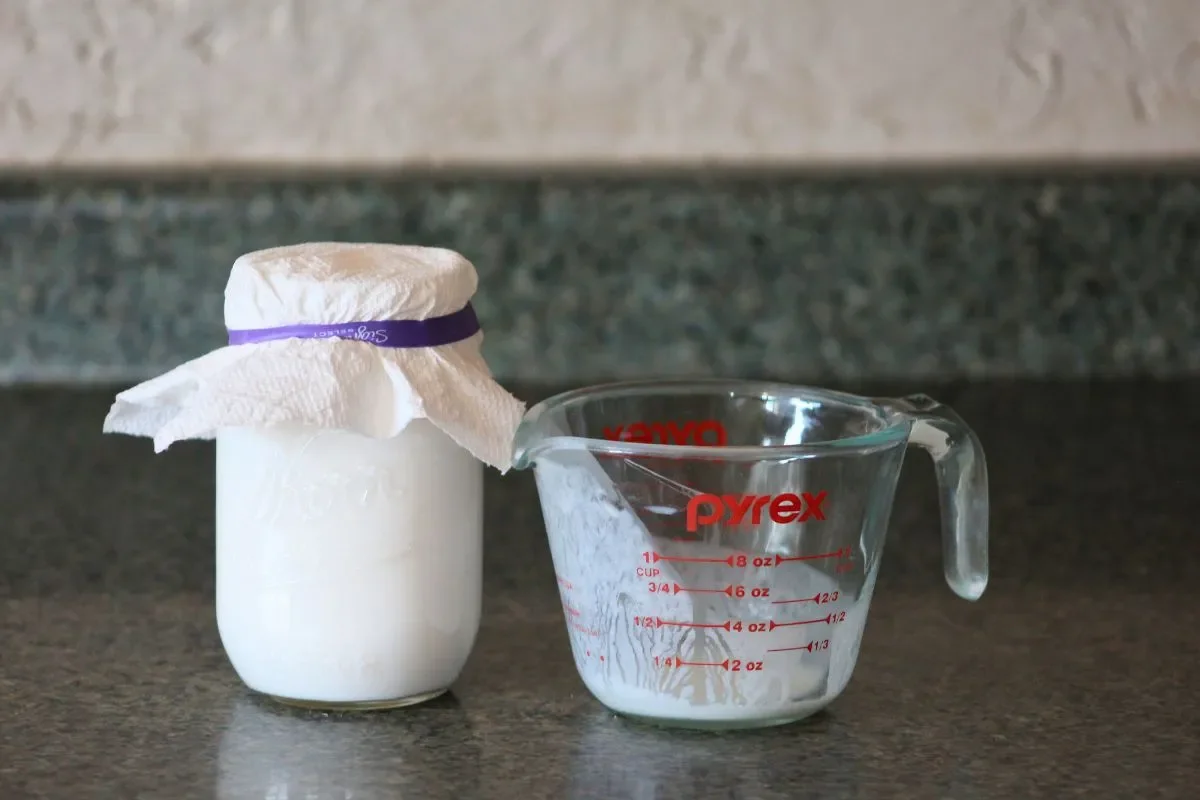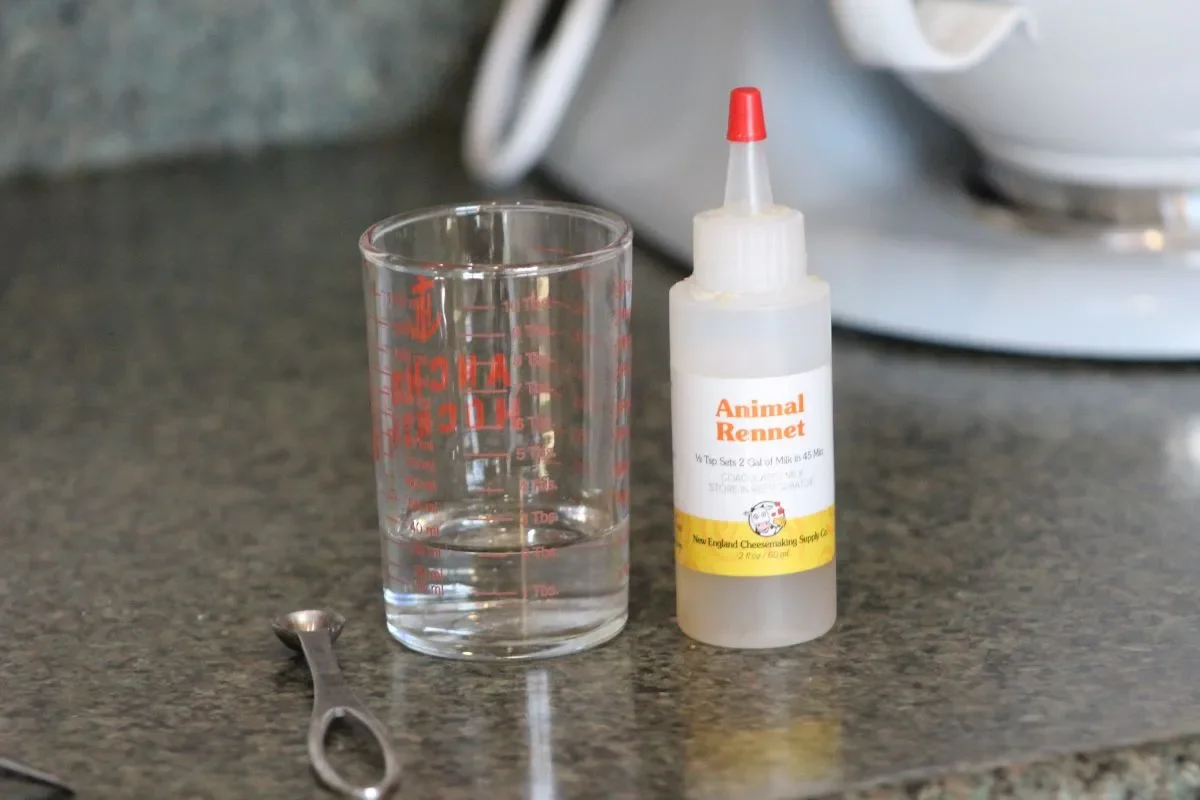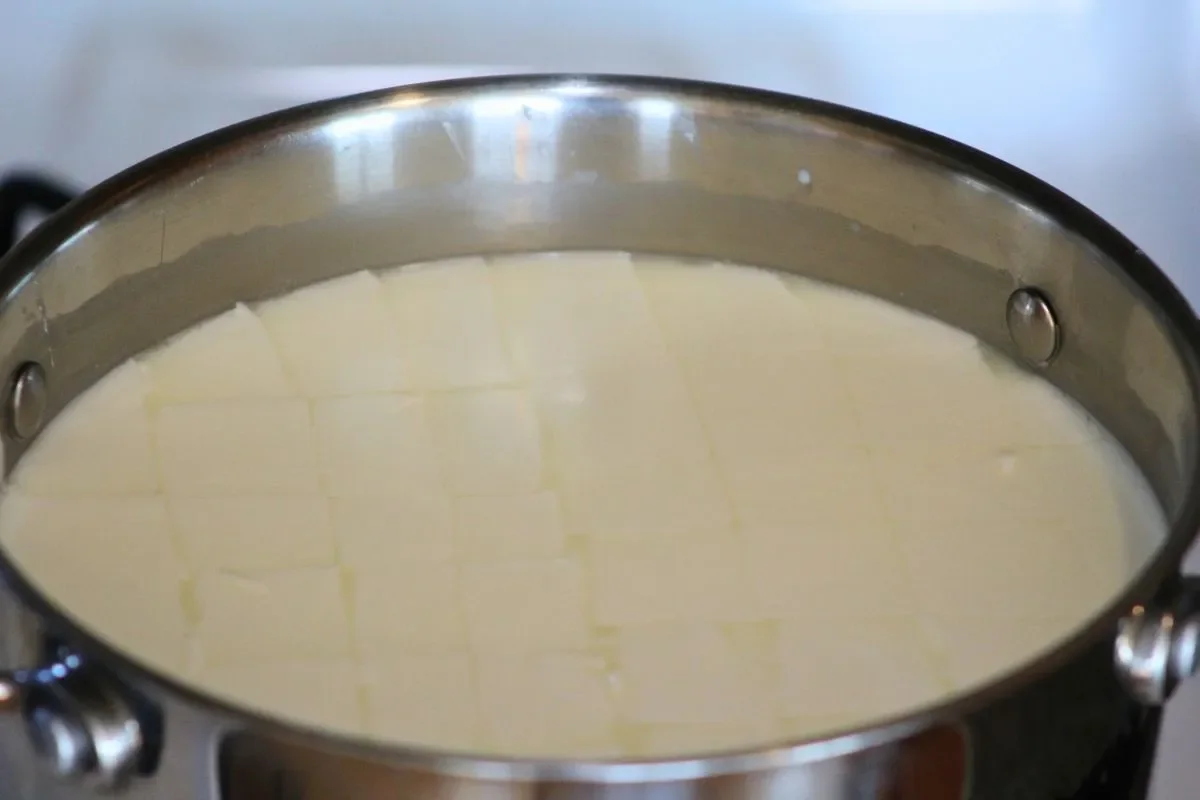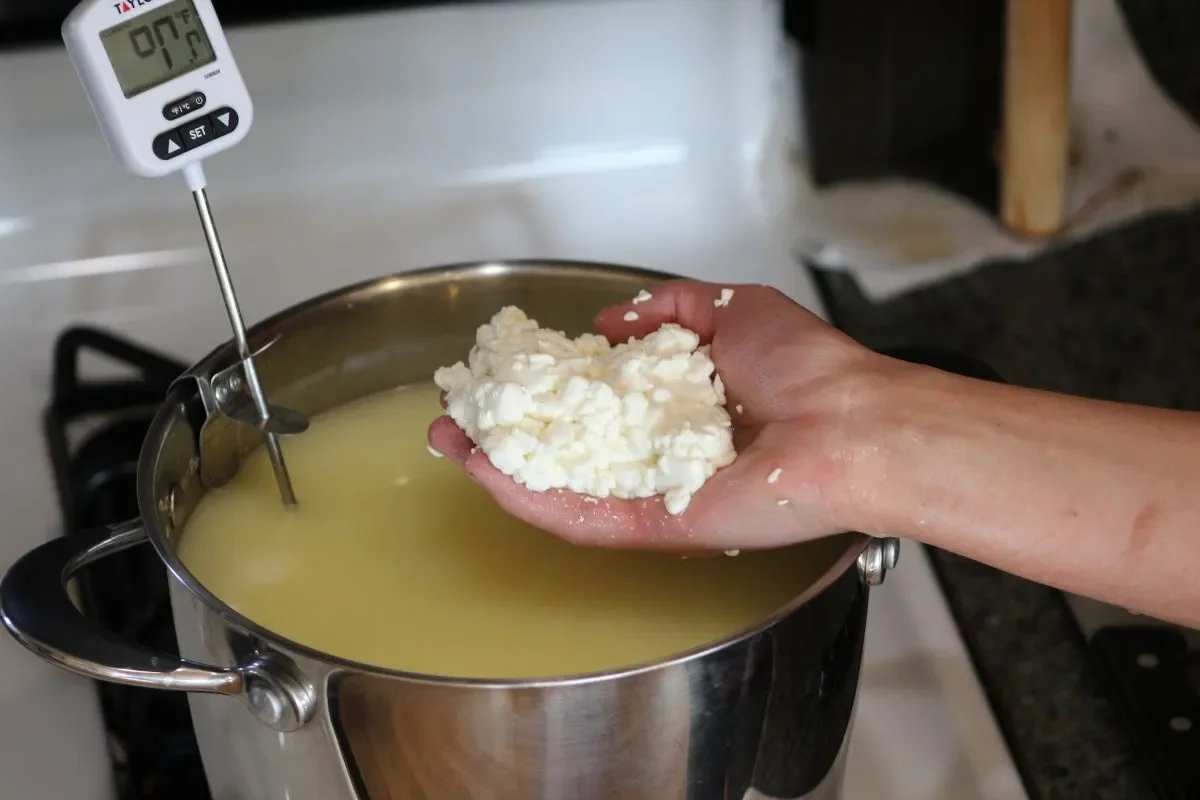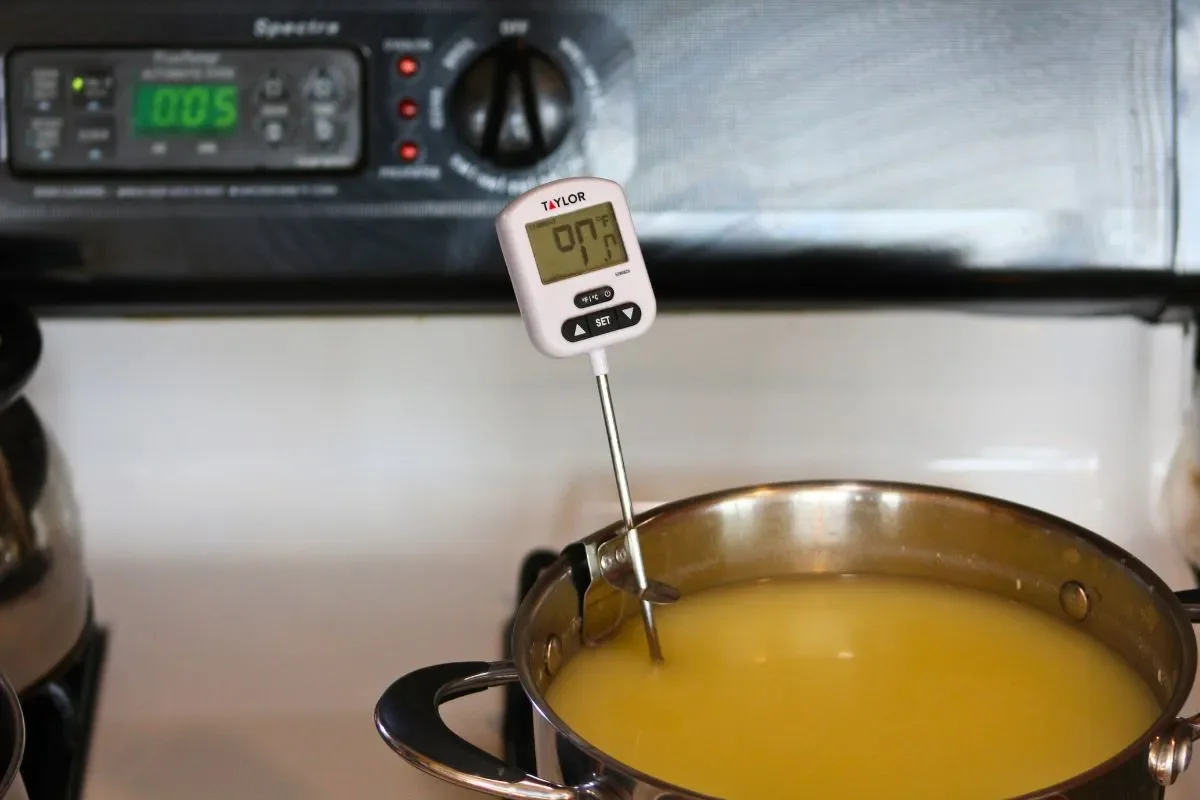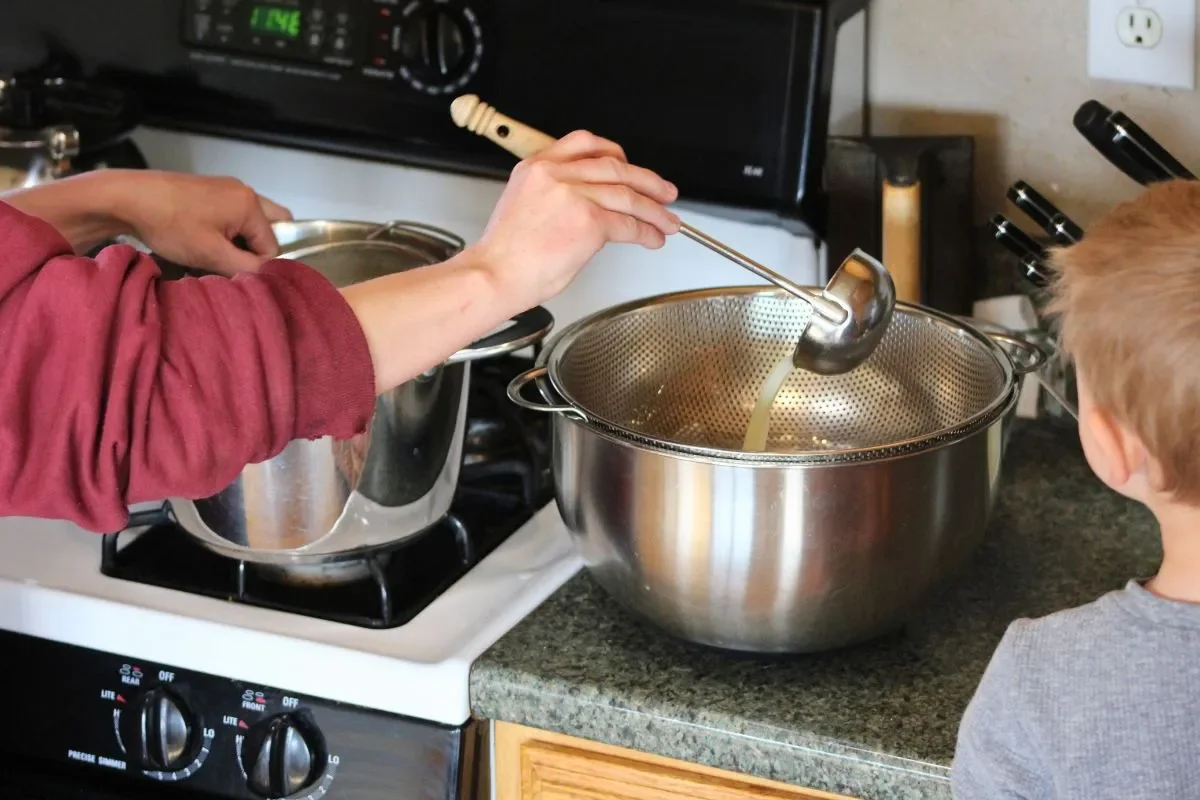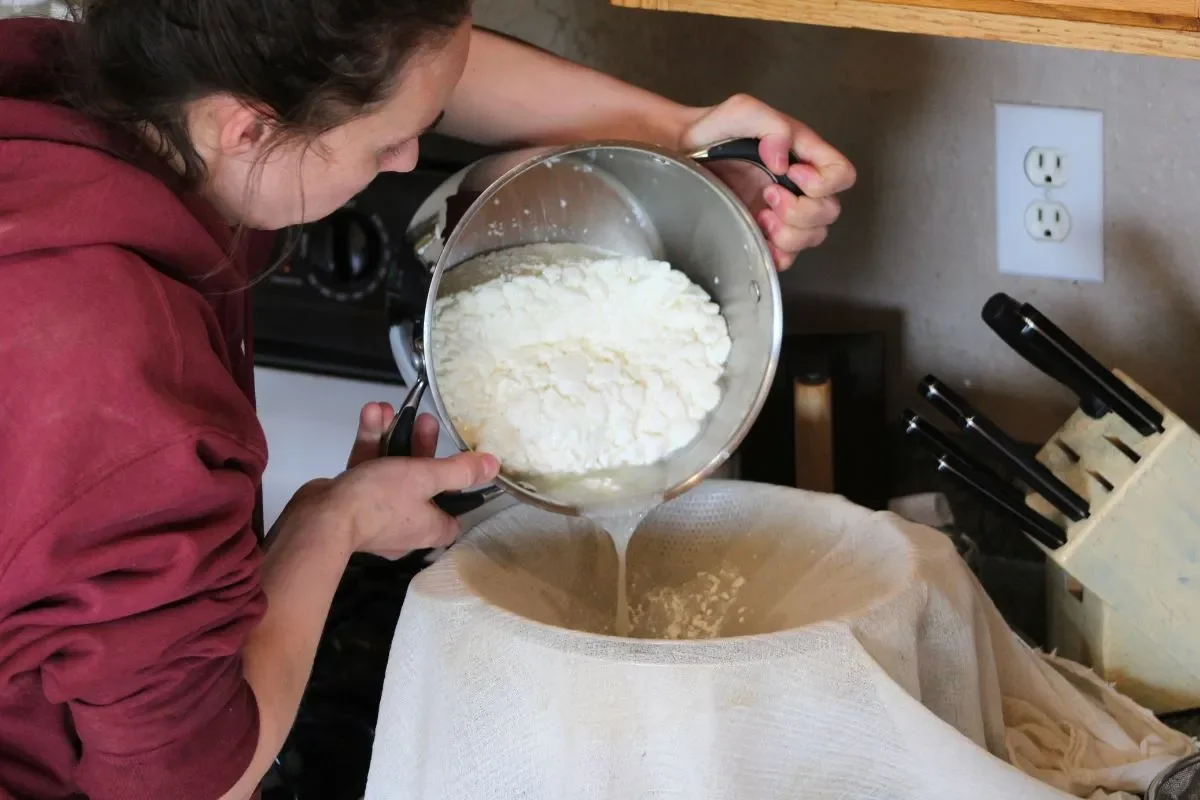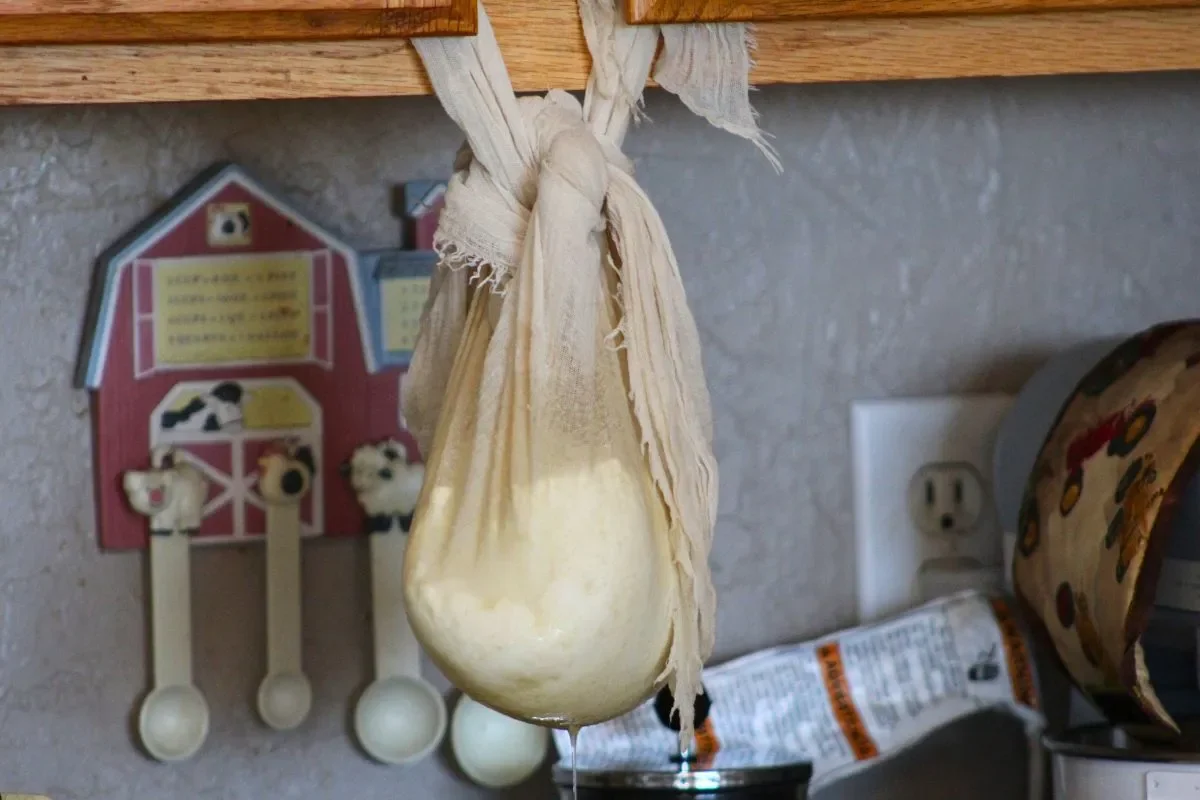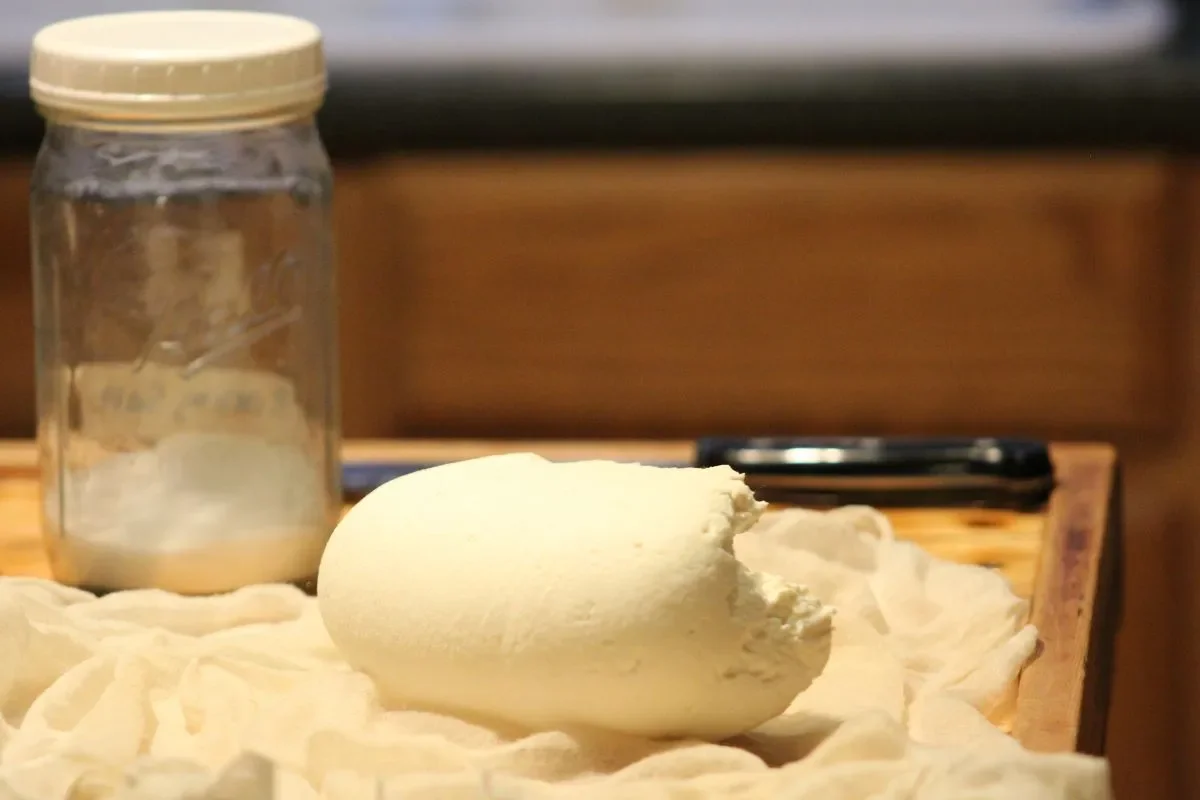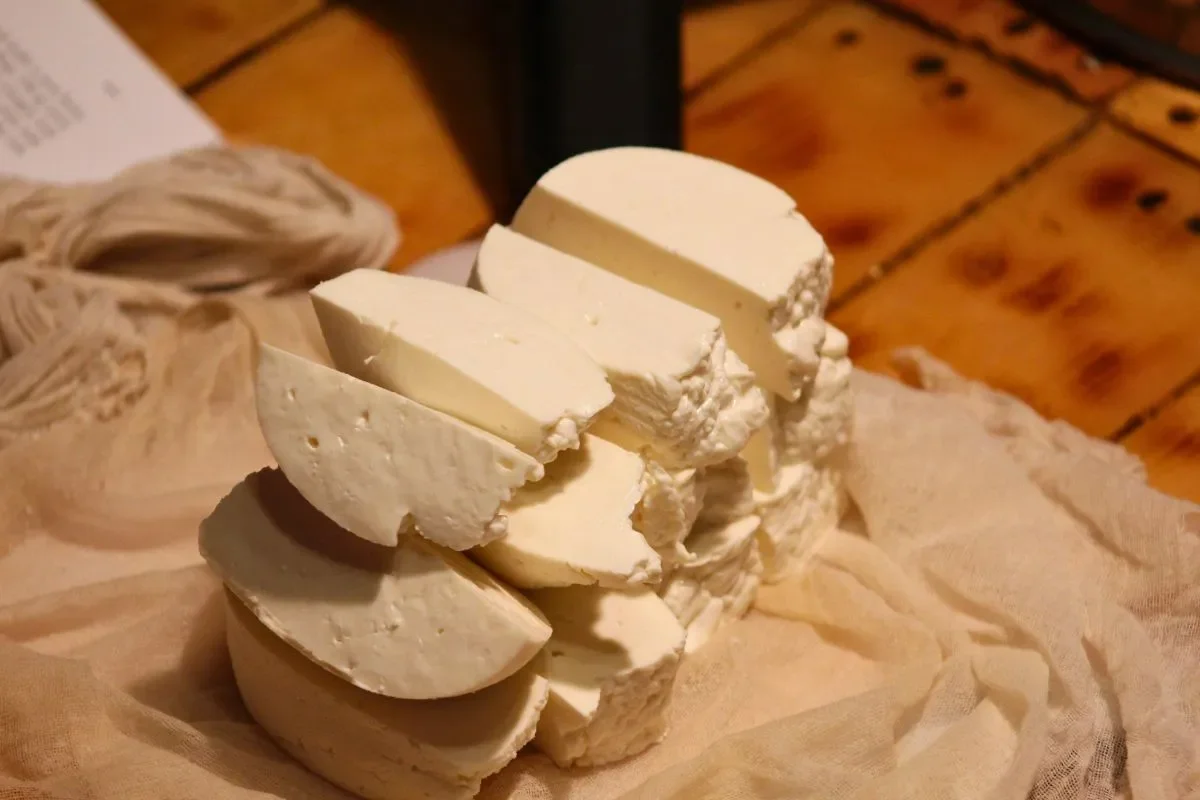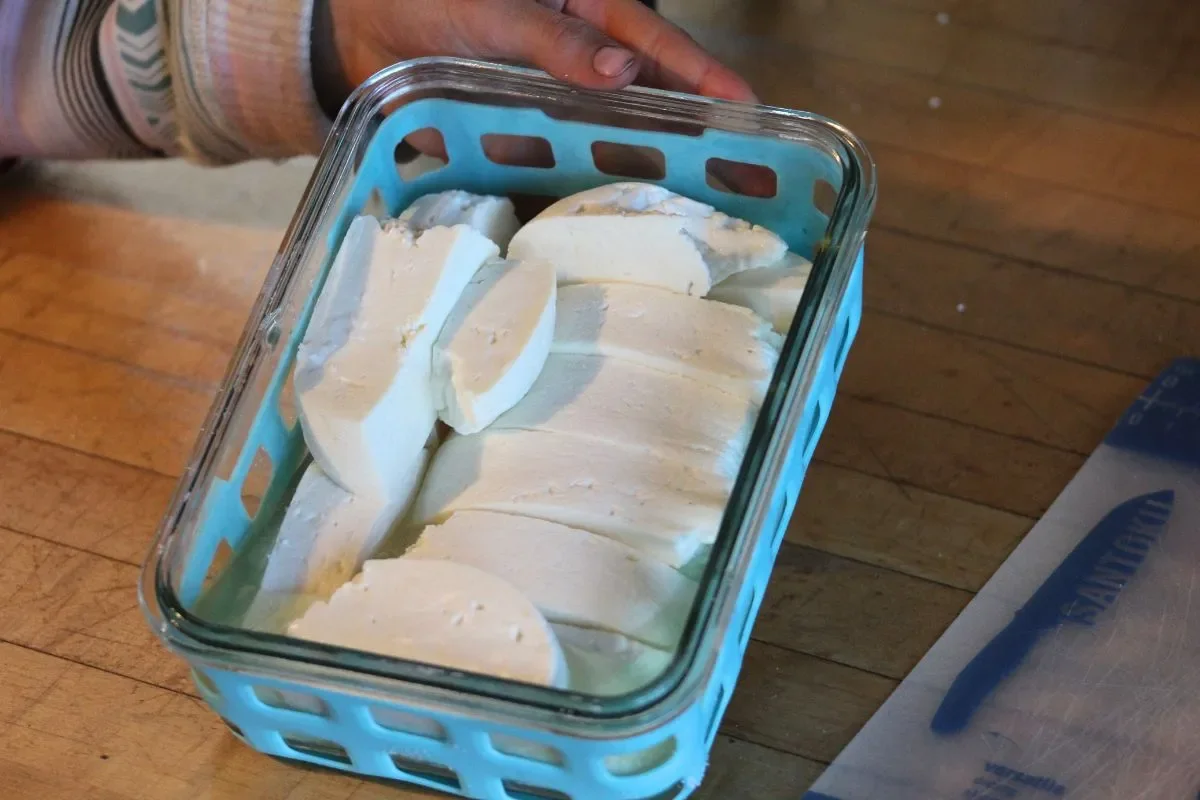How to Make Sheep Milk Feta at Home
Are you looking for a simple cheese to get you started on your cheesemaking journey? Look no further than feta – simple, delicious and it doesn’t require any special equipment.
Feta cheese was never really even on my radar until I came across a recipe for a Greek salad I wanted to make. Of course it called for Feta, and here we are.
How to make sheep milk feta
Feta is really simple to make. I can’t guarantee this is an authentic or traditional recipe, but it is family approved, tasty and easy, so what more could you ask for?
The steps are as follows:
Heat milk
Add culture
Add rennet
Cut curds
Stir curds
Remove whey
Hang curds
Slice curds
Salt
Brine
That’s it! Ten easy steps and you have yourself a delicious, versatile cheese.
Heat your milk
The first step to making Feta is to heat your milk to 88℉ over a medium flame. Well actually, if you want to be fussy about it, I SUPPOSE the actual first step is milking your ewe… or pulling off the lambs. But you already know how to do that! Let’s move on.
Add culture
I chose to use clabber here because I have it readily available and it is delicious! I used 1/2 cup for one gallon of milk. You can use a mesophilic freeze dried culture, buttermilk, or whey.
After you mix in your culture of choice, cover the pot and let culture for 1 hour.
Add rennet
After 1 hour, recheck your temperature to make sure it stayed at 88℉. If it cooled off, heat it back up. Dilute your rennet in water (if you want, not necessary). For my fresh sheep milk (most of it came straight from the ewes, only one quart was from the night before) I used 5 drops (1/16 tsp) of single strength rennet.
Stir with an up and down motion for 30 seconds to one minute. Use your curd spoon to slow or stop the motion of the milk before replacing the lid and letting set for 45 minutes.
Check for a clean break & cut curds
After 45 minutes check for a clean break. Lightly slice the top of the curd with your knife, then, with your blade turned sideways, put your knife into the curd under the slice and lift up. The curd should split open cleanly with clear whey running in.
If you don’t have a clean break, put the lid back on the pot and wait an additional 15-20 minutes and then check again.
If you do have a clean break, cut your curds into approximately 1” cubes, with a series of three cuts, horizontal, vertical, and undercuts. Let rest for 15 minutes.
Stirring the curds
Check the temperature of your curds. Try to maintain a temperature of 88℉ as well as you can by turning your burner on and off as needed.
*Don’t turn your burner on at this stage and then walk away! It is easy to become distracted, forget and then overcook your curds. Ask me how I know!
Set a timer for 20 minutes and begin gently stirring your curds. They will be soft at first, but should firm up fairly quickly. I like to stir with my hand so I can reach down to the bottom of the pot and bring the curds up from the bottom.
I like to look for curds that were cut too large and gently split them in half while stirring.
*Don’t forge tot chase out curds hiding behind the thermometer!
After 20 minutes let the curds settle at the bottom of the pot for 5 minutes.
Remove whey & hang curds
For this step you can do this however is easiest for you. This is what I do: I set a small colander on top of my curds then ladle off the whey until it is at the level of the curds.
Next, I set a cloth lined colander over a bowl and carefully pour my curds into the colander. After that I tie my curds up in the cloth and hang it from my cupboards. (I tie the tail of my cloth around the center post of my cupboards.)
Let hang for anywhere from 6-12 hours depending on how you like your choice (less time = more moist, less tangy and crumbly; more time = drier, more crumbly, more tangy). I chose to let mine hang for 8 hours since it was the middle of the day when I got to this step.
Slice & salt
After your curd has hung for as long as you desire, remove the cheese from the cloth and slice into approximately 1” slices.
Sprinkle the curds with 2 tablespoons of non-iodized salt, rubbing it into all sides of the slabs. Finally, pack the slabs into a container and let sit at room temperature for 8 hours.
Choose your own aging adventure
Put in the fridge and eat right away
Let sit at room temperature for another 8 hours then store in the fridge as is - or put in a brine or oil. See below for how to make a brine.
A few things to note
Hanging time is flexible and depends on your preference and what works with your schedule. In general, the longer it hangs the more dry, crumbly and tangy it will be.
If you really like salty Feta, store it in brine. If your family prefers a less salty option, do NOT store it in brine. Experiment and see what your family likes best.
How to make a brine
Mix 1 quart of cold water, 1/2 cup non iodized salt, 1/4 tsp calcium chloride (so the brine doesn’t leach calcium out of the cheese making it slimy) & 1/2 tbsp white or apple cider vinegar.



